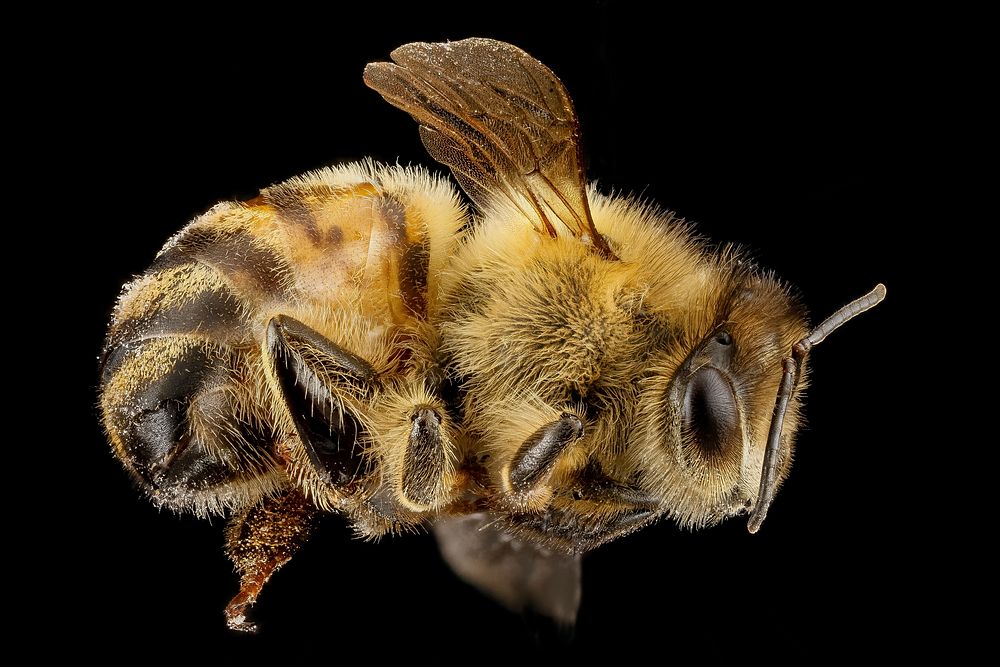
Apis mellifera F, whole bee, MD, Beltsville_2013-04-25-16.28.09 ZS PMax
Haplodiploidy – The Western Honey Bee’s Twist on the Birds and the Bees
Haplodiploidy is not a word that you hear every day, and is an unfamiliar to most of us. It’s a strategy unlike our usual “birds and bees” understanding of reproduction. Western Honey Bees like this one are one of the most successful organisms on the planet. Priority number one is the success of the colony, even if it means forgoing their own reproduction. Instead of each individual reproducing, only the queen lays eggs. Unlike other species, both fertilized and unfertilized eggs are laid. The unfertilized eggs have only one set of chromosomes (which differs from the queen’s 32) and develop only into males that serve the colony as drones. Female workers are born from fertilized eggs and are genetically very similar. This relatedness contributes to the hive’s complex social and organizational, and architectural structure, but also makes Western Honey Bees susceptible to diseases. Humans need healthy bees to pollinate crops, produce honey, and serve as food for other animals. They are one of the most important pollinators in the Greater Yellowstone Ecosystem, and contribute $15 billion dollars annually to the US economy. Where would we be without the birds and the bees?. Original public domain image from Flickr